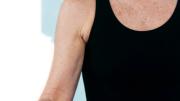One day, mental exercise may join physical exercise on Americans’ to-do lists and among their doctors’ recommendations. So says a team of researchers whose findings suggest that meditation prevents age-related thinning in parts of the brain. In recent decades, many scientific studies have demonstrated the positive effects of meditation on psychological and physical well-being, but the study published last November in NeuroReport by a group headed by Sara Lazar, instructor in psychology in the department of psychiatry of Harvard Medical School, is the first to associate meditation with actual anatomical changes in tissue.
With age, the cerebral cortexthe brain’s outermost layergrows thinner. Scientists don’t know for certain what effect that thinning has, but suspect a relationship to mental acuity, since that, too, declines with age. But when the researchers compared the brains of seasoned meditators (who averaged more than nine years of meditation experience and practiced more than six hours per week) to controls with no meditation experience, they found the meditators’ brains to be about 5 percent thicker in four areas. These are the frontal lobe, associated with memory and such higher-order functions as planning, reasoning, and impulse control; the insula, which perceives taste as well as internal states such as heartbeat and fullness of the stomach, and is involved with integrating thoughts and emotions; the parietal lobe, which senses touch; and the temporal lobe, which senses sound.
The discrepancy was even more pronounced among the oldest subjects, who were between the ages of 40 and 50. By their late 40s, the meditators’ brains were as thick in those four areas as those of the 20-year-olds, and the non-meditators’ brains were thinner than those of either the late-40s meditators or the 20-year-old non-meditators.
Admittedly, the scientists studied only 35 subjects20 meditators and 15 controls. And because the study did not measure subjects’ brains before they began practicing meditation, it doesn’t speak to cause and effect. Even so, these results “really suggest that something unusual is happening” in the brain during meditation, says Lazar, a molecular biologist who works with the Psychiatric Neuroimaging Research Program at Massachusetts General Hospital (MGH).
Researchers have documented the brain’s plasticity, or ability to change in response to stimuli. For example, a 2004 study of people learning to juggle showed that their brains’ visual-motion areas thickened as they practiced juggling, and thinned again when they ceased to juggle regularly. New technology now allows viewing the brain with ever-greater precision. Lazar’s study used a method called structural magnetic resonance imaging, using a modified protocol developed within the last five years by Bruce Fischl, associate professor of radiology. Fischl optimized MRI scanner settings to produce an extremely high-resolution image that can reveal differences as small as 0.1 millimeter.
Lazar’s study used practitioners of “insight” meditation, in which meditators focus on breathing and the calm acceptance of sensory stimuli. Thus, whether the sound outside the window is raindrops or a jackhammer, insight meditators try to notice simple acoustic qualities, not speculate on a source or respond with emotional connotations, such as soothing or annoying. (Although insight meditation originated in Buddhism, the study subjects did not necessarily practice Buddhism.) Lazar speculates that other types of meditation might affect different regions of the brain. Her team has also begun another study that uses functional MRI to examine meditation’s effects on heart rate, breathing rate, and skin conductance (a measure of arousal used by lie detectors).
Lazar’s own experience with meditation began 10 years ago, when she was a graduate student at Harvard. While training to run the Boston Marathon, she injured herself and took up yoga, then later began sitting meditation. Last summer, she attended a research conference on meditation that drew about 200 participants. “These are real, serious scientists,” says Lazar. “I think there’s going to be a real explosion, in the next couple years, of well-performed experiments coming out in mainstream journals.”
~Elizabeth Gudrais
Sara Lazar e-mail address: lazar@nmr.mgh.harvard.edu






